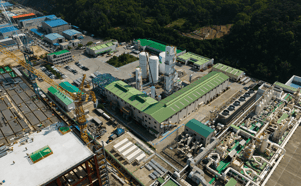An introduction to cylinders
Believe it or not, the first evidence of containers for “holding” gas arrived in the 18th Century as animal bladders. A century later the technology had shifted to welded copper spheres. Another century on and talk turns to high pressure containment of 700 bar pressure in non-metallic, composite cylinders – cylinders used in the gases industry have certainly travelled a long journey.
They began to resemble their contemporary descendents in Germany during 1885, when Max and Reinhard Mannesmann developed a production method for manufacturing seamless steel tubes by extrusion. Since their initial production, cylinders have continued to evolve and are now available with specialized coatings, in composite materials, and in varying sizes and weights for a gamut of applications.
Trends
Demanding regulations which govern the manufacture, sale and use of cylinders have long posed challenges for our industry. In the face of such challenges, cylinder manufacturers have come up with several recent developments including specialized coatings, negative pressure technology, ultra-light weight high pressure medical gas cylinders, and more recently still, eco-friendly refillable cylinders.
Cylinders for industrial gases are normally owned, filled and distributed by various companies around the world although users are most familiar with several large transnationals. However, if an end-user of any industrial sector needs a relatively small amount of gas – supply through high pressure cylinders is still the best solution.
The capital investment in a gas cylinder is initially high in comparison to the cost of its gas content and the associated transportation expense. The inherent bulkiness and, to an extent, relatively large weight of a cylinder – compared to its content – puts a heavy penalty on long journeys. However, the cylinders themselves usually have a lifetime of several decades. Similarly, recent advances in materials science and new ultra-light weight cylinder designs have come some way towards resolving such monetary concerns.
Lightweight Cylinders
Being a freight intensive industry, transporting cylinders around on carriers is a costly issue. If cylinders are lighter, vehicles can haul more weight, thus saving on transportations costs. Most manufacturers have developed lighter weight cylinders in recent years, employing higher strength materials and composites to reduce both the weight and size of new cylinders. Similarly, the introduction of safety standards particularly the EN ISO 11114 series, have ensured that these new metal, alloy and non-metallic cylinder designs remain as reliable as ever.
Composite Cylinders
Composite cylinders represent a new generation in cylinder technology that ensure dramatic weight reduction with reputable performance. A composite cylinder consists of two or more physically distinct and different materials that are combined to achieve a product with superior properties to the original materials alone.
Some types of cylinders are manufactured using non-metallics such as Type 4 composites. Typically, these are composed of either a plastic liner with a fibre-reinforced plastic layer or liner-less alternatives. Other cylinders are often steel or aluminum wrapped with carbon fibre, hence allowing the container to withstand higher pressures at a reduced weight.
... to continue reading you must be subscribed









